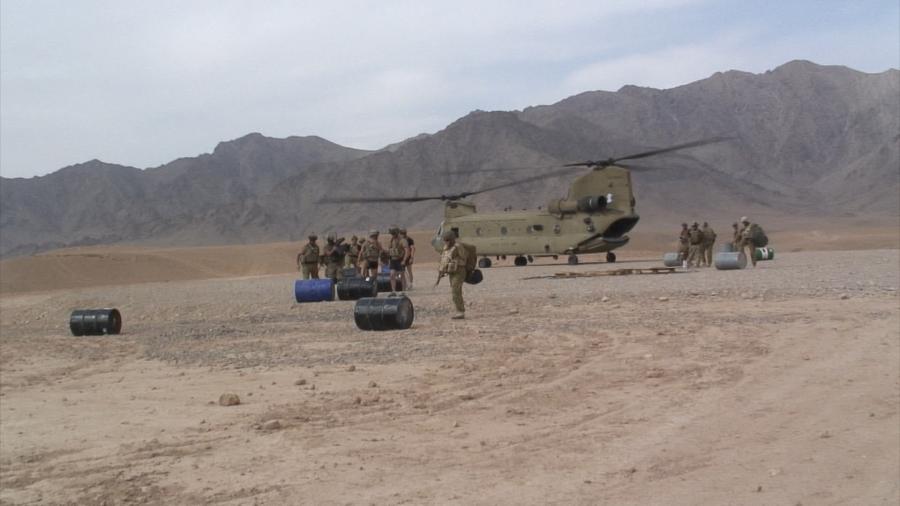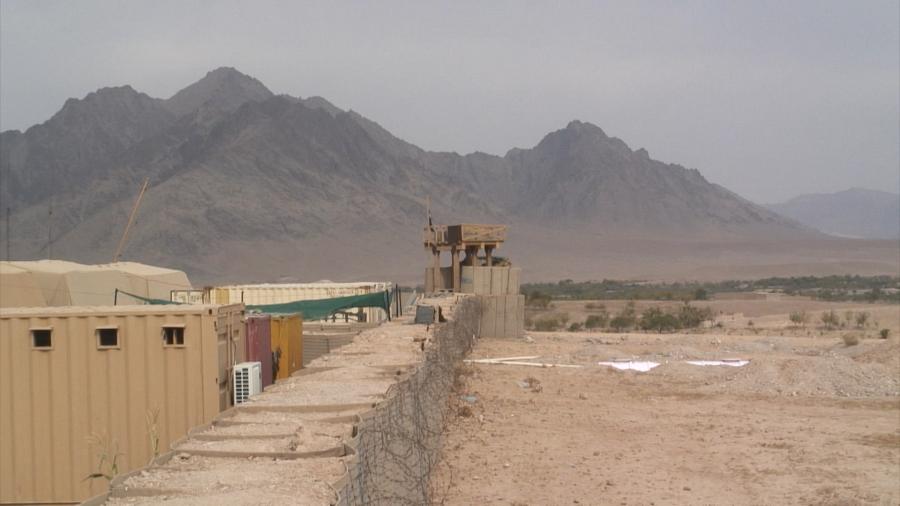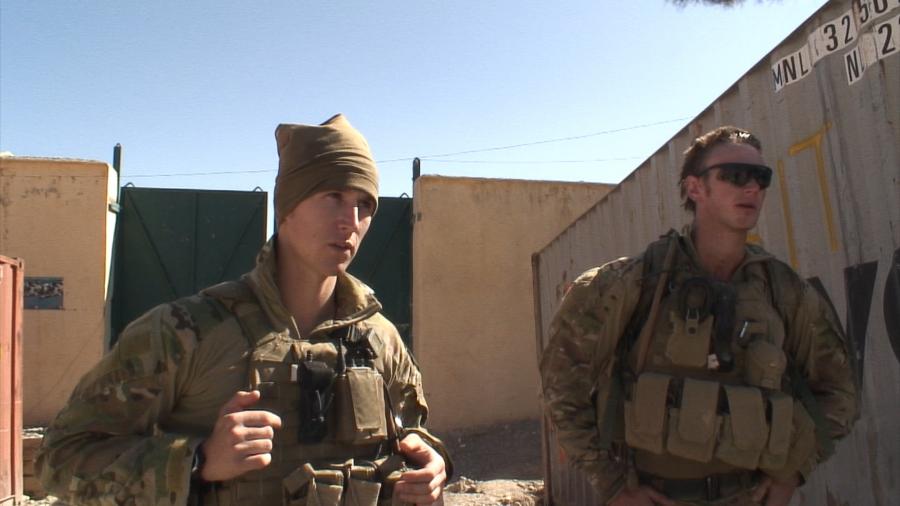Patrol Bases of Uruzgan
.. We’ve had seven contacts, and 29 cache finds in the last three to four months.. we’ve killed three insurgents.. so it’s a quite active area.
In 2011, the Memorial's official cinematographer John Martinkus travelled from Australia’s base in Tarin Kot, Afghanistan, to Patrol Base Samad, a small and simply constructed outpost where Australian troops train and mentor Afghan National Army members, and Patrol Base Mirwais Set the task of documenting the experiences, work and living conditions of Australian Defence Force members in Afghanistan, John created short film from his time in the Memorial’s Official deployment. This is the second of his stories :
Although Samad is not far by air from Tarin Kot,
.. when you arrive in the arid expanse around the base, you quickly get a sense of the isolation and remoteness of this small outpost.

Martinkus’ footage bears this out – dusty and featureless plains surround the base’s Hesco walls, stretching to sharp peaked mountains in the far distance. A vehicle, irreparable after an IED attack, sits abandoned outside the base. Martinkus notes that at Samad, the only vehicles are those issued to the Afghan National Army…with no vehicles, the patrolling around this area is all on foot.
Within the base, facilities include a shipping container, fitted out as the washroom; a satillite phone, and a ping pong table, which is in use by Australians on their down time whilst Martinkus is guided around the base by an Australian sergeant. The familiar sound of a ping pong table is a strange counterpoint to the sergeant’s description of regular Taliban attacks, as he indicates from which directions the base has to defend itself. Patrols are necessarily limited according to the wishes of the Afghan army members and the resources of this small and sparse base. Martinkus notes that
There are so few Australians here, that when these men go on patrol, only three remain on base to quite literally, hold the fort with the Afghans.

Protecting wide areas with few resources is a theme picked up again at Martinkus' next stop - Patrol Base Mirwais, occupied by Australian, Afghan and US force members. Overlooking a village and a ‘green zone’, through which Australian and Afghan forces patrol, Mirwais' inhabitants are in regular personal danger from IED strike and Taliban attack. One of the Australian troops based at Mirwais describes a three hour engagement, whilst another relates the story of chance encounter on night patrol which resulted in the kill and capture of several Taliban members.

The 2011 appointment of the AWM Official Cinematographer followed in the Memorial’s tradition of official commissions since the First World War. The Memorial’s commissioning of John Martinkus marked its first official association with a journalist since official war reporter and historian Charles Bean founded the Australian War Memorial.
Martinkus, a highly respected author and journalist who has reported from conflict zones including Timor, Ache, Papua, Iraq and Afghanistan, was an ideal selection. The Memorial needed a person with excellent video-graphic and writing ability, the capacity to work long hours in rugged conditions, and a willingness to travel wherever the Australian Defence Forces would allow within Australia’s Middle East Area of Operations - incorporating Australia’s bases at Al Minhad and in Afghanistan. Travelled as one of the Memorial’s official party, with commissioned artist Ben Quilty and a Memorial senior curator, he filmed in areas rarely if ever seen on our screens at home.
A commission should allow the cinematographer to bring his personal style to the work, so John was asked to record as sincerely and authentically as possible the life and times of ADF members in an active theatre of war; to document the experiences, whether personal or procedural, for benefit of contemporary and future generations. In this way he helped build the Memorial’s factual record of the ADF working environment with particular reference to people, events, routines, the dynamics between Australians, ISAF and Afghan National Army members. In the course of this work he would also record one to one interviews with ADF members in a variety of locations across Afghanistan. An essential part of the Commission was John’s production, upon returning home, of three separate pieces or “stories” which would provide concise insight into different aspects of ADF life “in-country” . John’s objective, journalistic eye – in keeping with the highest aims of Charles Bean’s vision - has provided us for years to come with valuable insight into the life and work of Australians in Afghanistan.